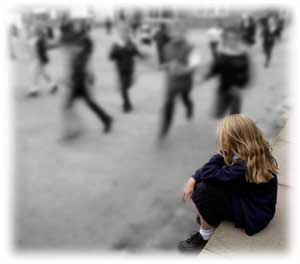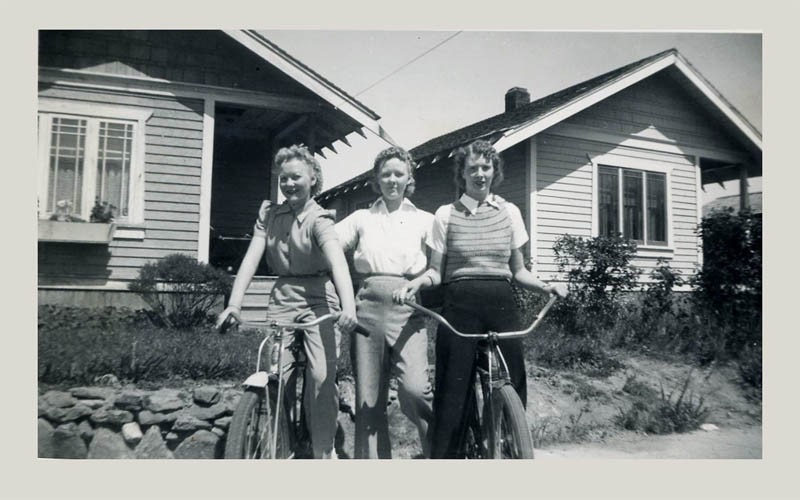Chapter 1
In chapter 1, I was most impressed with the writing activity based on photographs that students bring from home. I think this was a really interesting idea because not only did the photograph serve as a type of inspiration for the students, but it also asked the students to write about their own lives, so the writing became personally meaningful to them. I thought it was an interesting idea to have the students write a letter to their younger selves to help students to generate some emotions about what they feel now about the photograph. I think students would have fun with this activity and I think it is a good preparation for the final result: the THOMS style vigniette. It would be really neat to compile all of these vignettes from each class so you could make your own sort of THOMS book together as a class. This could also help with team-building because it would allow each member of the class to get to know one another more intimately.
I hadn't heard of Woman Hollering Creek before reading this chapter, but I think this text is something worth investigating. Jago says it is "a collection of stories focusing on the lives of girls and women in the Lation community, strong females who struggle with the daily business of living in the barrio." I think this text could be used in several ways in the classroom. 1) Jago says that each story could stand alone as a short story, so it might be interesting to take a story to compare to Esperanza's experience in THOMS, since she is a strong female character also. 2) It could be a part of an inquiry unit focusing on the role of women in society, or what it means to be female in society. 3) You could use this text to have students become familiar with critical theory- they could read the story through a feminist lens. Either way, I think this text could be very useful in the classroom.
Chapter 2
I liked the idea of writing from models in chapter 2.I think that providing the students with a model can help to encourage reluctant writers to feel more comfortable expressing themselves, because they can use this as a sort of formula to write their first poem if they are feeling unsure. This activity could also work well for more experienced or for writers that feel more comfortable experimenting because these writers can take what they know about the model poem and play with the form in their own poem to try and create a stronger meaning in their work. I really liked Cisnero's poem "Abuelito who" for this activity because it allows the students to write about their own lives, someone who is important to them. I feel like every student has at least one person that they care deeply about and this activity can be a good one to help students to feel comfortable talking about their own lives.
Although I thought Jago makes an important point when she says that she wants to make sure that "every student who has written a poem has a chance to share that poem out loud to at least one other listener", I don't think I would have students share these as a Think-Pair-Share activity. I would rather see students working in writing groups, where they have been developing a community all year (or for the semester) and are thus more comfortable sharing with this group of students. This seems better to me because not only are students more comfortable with a writing group, but they will also receive more feedback this way than by just sharing with one other person. This eliminates the issue of having to share in front of the entire class, but makes it so that more than just one other person has heard their work. I mean, the students work hard on these poems, there should be more than just one person to listen to the finished product.
Jago has an interesting take on homework in this chapter. I am still unsure how I feel about homework. I really don't like the idea of just sending students home with homework just to make sure that they are "developing responsibility." I think that Jago has a point, though, when she says if she DOES assign homework, it has to be meaningful/ I just worry though that if we are assigning the most meaningful work outside of class, what happens when students don't do it? I think the most important work should be done with the class in a learning community so that all students are doing the most important work and discussing the most important issues together. After all- Vygotsky would argue that learning is social and we learn the most when working with others. How can that happen if we are sending students home to do all of the work on their own? Finishing a poem for homework? Maybe. Assigning homework on a constant basis? I don't think that works. Other thoughts on the homework dilemma?
The House on Mango Street
Esperanza
"In English my name means hope. In Spanish it means too many letters. It means sadness, it means waiting."
Saturday, April 2, 2011
Tuesday, March 15, 2011
Teacher's Mango Pages
Hey all-
Jim shared this link with me:
Notes for The House on Mango Street
What does everyone think of this teacher's ideas for teaching Mango?
-What do you think of the assignments? Any you really like or dislike?
-What do you think of the questions for each vignette? Are they worth discussing?
-What do you think of the idea to compare THOMS to Little Red Riding Hood?
-What do you think about talking about the introduction, themes, and whether or not this novel is a novel on this site? Are these notes our students need to have?
Has anyone come across any teacher websites that you want to share for THOMS? If you get a chance, maybe we could all browse around and link one in a comment for future reference!
Jim shared this link with me:
Notes for The House on Mango Street
What does everyone think of this teacher's ideas for teaching Mango?
-What do you think of the assignments? Any you really like or dislike?
-What do you think of the questions for each vignette? Are they worth discussing?
-What do you think of the idea to compare THOMS to Little Red Riding Hood?
-What do you think about talking about the introduction, themes, and whether or not this novel is a novel on this site? Are these notes our students need to have?
Has anyone come across any teacher websites that you want to share for THOMS? If you get a chance, maybe we could all browse around and link one in a comment for future reference!
Monday, March 14, 2011
La Tolteca Mexicana Extravaganza
Our book club decided to celebrate the Latino heritage prevalent in our book by visiting La Tolteca for a book club meeting, after composing post 7 (our video) together. We shared food, ideas and laughs! Here are some photos of our great experience:
*Overall, we had a really great experience and enjoyed the Mexican food, music and culture. We would recommend it to all!
Mango Says Goodbye Sometimes
This is Post #7 for the group!
Our book club met over Spring Break to compose this video. Our voices, pictures, and interpretations of the vignette "Four Skinny Trees" are represented in this video.
Our book club met over Spring Break to compose this video. Our voices, pictures, and interpretations of the vignette "Four Skinny Trees" are represented in this video.
Sunday, March 13, 2011
Four Skinny Trees - Pictures
"Four who do not belong here but are here"
"Ferocious roots"
"Violent teeth"
"Raggedy excuses planted by the city"
"They'd all droop"
"Four who grew despite concrete"
"Four who reach and do not forget to reach"
"Four whose only reason is to be and be"
Two cool ones:
"Ferocious roots"
"Violent teeth"
"Raggedy excuses planted by the city"
"They'd all droop"
"Four who grew despite concrete"
"Four who reach and do not forget to reach"
"Four whose only reason is to be and be"
Two cool ones:
Subscribe to:
Posts (Atom)















































